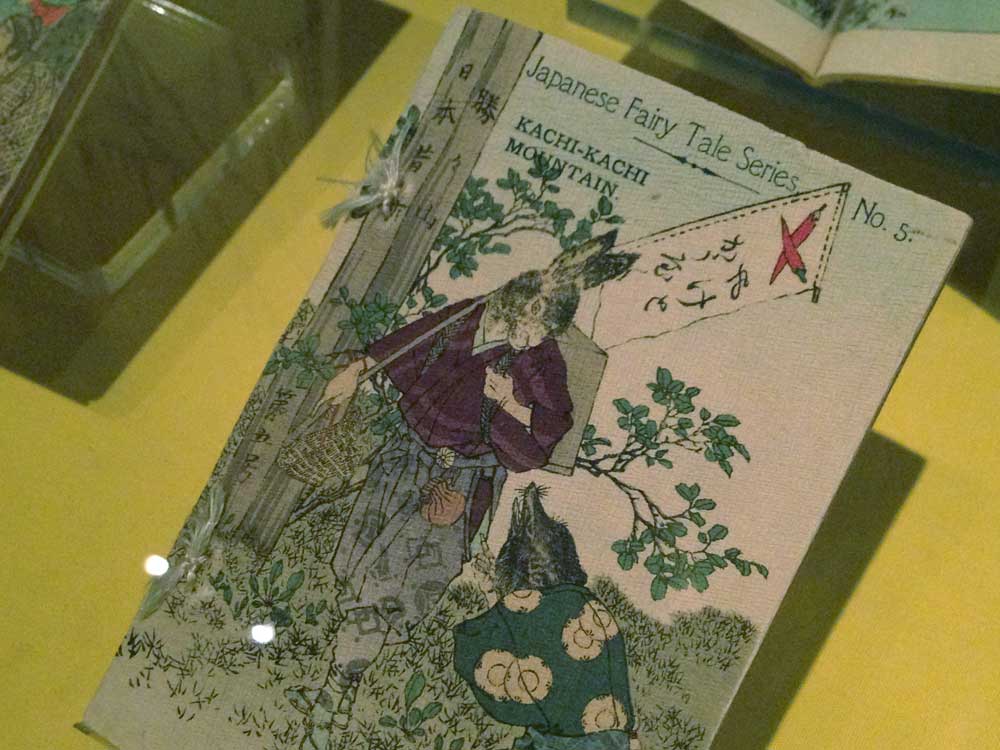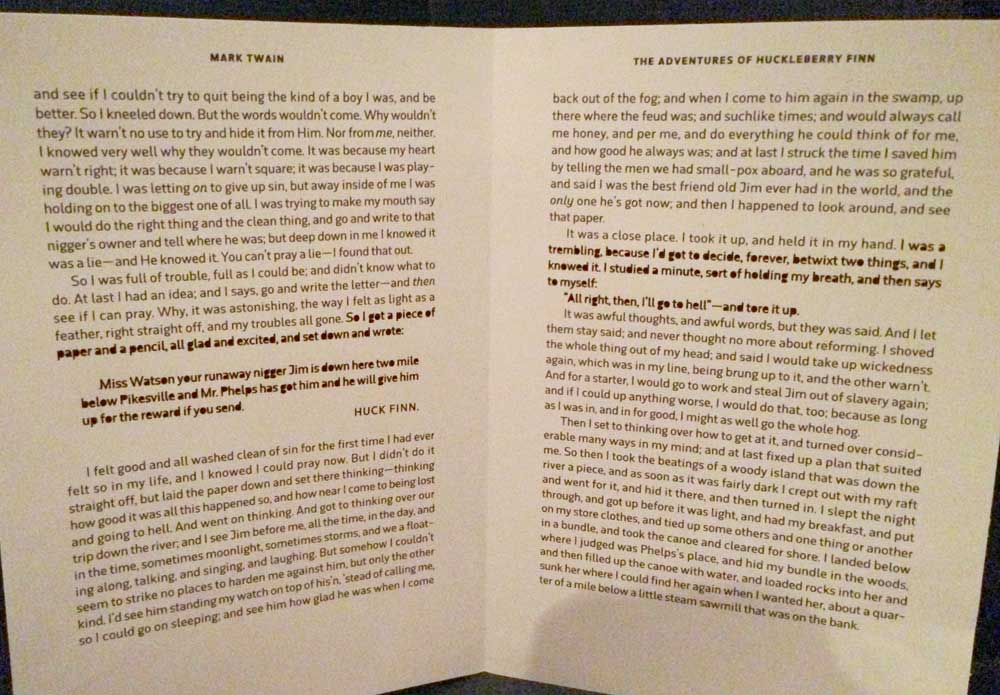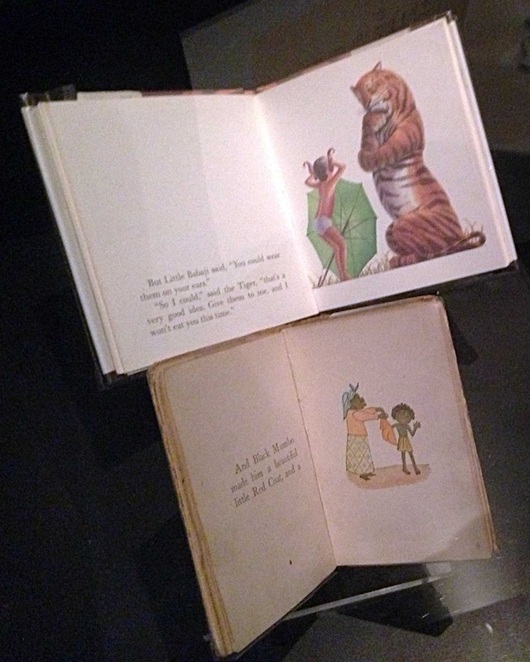In March of this year, I had the privilege of visiting the "ABC of IT: Why Children's Books Matter" exhibit at the New York Central Library.
I will share with you some of my personal highlights, especially pertinent to my interest in multiculturalism (race, ethnicity, class, world culture).
I will share with you some of my personal highlights, especially pertinent to my interest in multiculturalism (race, ethnicity, class, world culture).
A Short History of Multicultural Milestones in Kidlit
Religion and Class
Sinful Kids
Starting at the very beginning, children's books focused on bringing salvation to little sinful children. This is one of the earliest children's books around, first edition 1690. Puritan teachings.
Starting at the very beginning, children's books focused on bringing salvation to little sinful children. This is one of the earliest children's books around, first edition 1690. Puritan teachings.
A Question of Class
Children's books in mid-18th century England reflected the social class they belonged to. Middle class kids had plenty of free time, and storybooks to read. Working class children's role in society was labor, and learning a marketable skill early was essential. If those children were lucky enough to learn how to read, Instruction on Needle-work and Knitting was one of the limited options.
Around the World
East Meets West
When Japan re-opened it's trade doors to the world in the late 1800's, these beautiful fairy tale books, common in Japan, were a prize souvenir and first look into this distant land.
When Japan re-opened it's trade doors to the world in the late 1800's, these beautiful fairy tale books, common in Japan, were a prize souvenir and first look into this distant land.
German Influence
Considered "Germany's greatest contribution to children's literature", Der Struwwelpeter (1845) was brought to the US in 1891. It is what I grew up with, having disciplinarian German grandparents. The stuff of nightmares. I have a copy that I try to keep away from my daughter Lucy. But she seems fascinated with it.
Books as Cultural Uniters
Hebrew Alfa-bet book, pre-Israel 1920's. This one one of the earliest books which taught the Hebrew alphabet, and was used as an integrative tool between Jewish and Palestinian kids.
Europe's Attempt to Bridge the Gap
Le Taxi-Brousse de Papa Diop, by Cameroonian Christian Epanya was published in France in the 1970's.
By clarifying cultural differences between France and some of it's former colonies, it helped build bridges between the very distinct African and European cultures.
Russia Celebrates its Cultural Heritage
The Frog Princess, 1901, was the Russian governments first Russian attempt at retrieving the rich Russian culture of Folktales from remote areas of the country, back to the literate circles of St. Petersburg.
American Firsts
First Attempt at Instilling Racial Pride
The Brownies' Books, 1921 were the nation's first attempt at creating reading material for African American children. Langston Hughes published his first poem in this magazine. Unfortunately, it fell short of actually representing its African American readership.
The Brownies' Books, 1921 were the nation's first attempt at creating reading material for African American children. Langston Hughes published his first poem in this magazine. Unfortunately, it fell short of actually representing its African American readership.
First Native American Culture in Books
In 1941, In My Mother's House, by Ann Nolan Clark was published. It was the governments first attempt at implementing a more culturally sensitive approach in the education of Native American children. The beautiful artwork was created by Velino Herrera, a Native American himself.
Kids Become a Part of the Story
It's hard to imagine this, but until the early part of the 20th century, kids were actually not allowed in public libraries. The NY Public Library was one of the first places that opened it's doors to kids. In 1911, Children's librarian Anne Carroll Moore inaugurated the Children's Room at NYPL, where she hosted story hours, helped launch the Newbery and Caldecott medals, hired multi-racial staff who spoke many languages, and changed the perception of children's literature forever.
Promoting African American Culture
Augusta Baker, a children's librarian in Harlem, spoke out fervently on the need for more children's books depicting young people of color. She became the first African American librarian to head the NY Public Library youth services. Baker is shown in this picture (1940's) reading a book written by Ellen Tarry, a Harlem writer who was prompted to write by Baker.
Latinos into the Pot
Perez and Martina: a Puerto Rican Folktale, by Pura Belpre (1932) was one of the first books written that brought the native stories of immigrants into the american cultural scene. Pura Belpre was the first NY Public Librarian from Puerto Rico, and she was a champion for Latino culture. She introduced bilingual story hours, puppet shows honoring the Dia de los Reyes (Three Kings Day), and reached out to her Latino community in countless ways.
Redressing the Imbalance
From a Brooklyn high school, to Harper Junior Books, the book Stevie, by John Steptoe, received a warm welcome into the Children's literature scene. It marked the beginning of a broadened representation of African American characters in American society. Something the publishing industry is still working on.
Censorship
Sweeping Differences Under the Rug
One of the exhibits is contained in a dark, cave-like section, with a floor to ceiling wall of books whose titles have been banned, content modified, or entirely burned at some point. Within this room, I found some interesting samples related to race:
One of the exhibits is contained in a dark, cave-like section, with a floor to ceiling wall of books whose titles have been banned, content modified, or entirely burned at some point. Within this room, I found some interesting samples related to race:
The Marriage that Caused a Furor
The Rabbits' Wedding, by Garth Williams 1958
This book, which depicted a wedding between a white and black rabbit caused outrage in Alabama for promoting inter-racial marriage. Because the state library director only limited it's circulation, refusing to banish the book entirely, he was forced to resign.
The Rabbits' Wedding, by Garth Williams 1958
This book, which depicted a wedding between a white and black rabbit caused outrage in Alabama for promoting inter-racial marriage. Because the state library director only limited it's circulation, refusing to banish the book entirely, he was forced to resign.
The Adventures of Huckleberry Finn, by Mark Twain, 1884
This classic American literature is still controversial for using language which may be considered racist. Though supporters say that it accurately portrays the language of its time and by doing so, points out historic social flaws, it has recently been altered in one school edition, in which the N-word has been altogether removed.
The Story of Little Black Sambo, by Helen Bannerman
Pulbished in 1901, it was at first a great hit. In the 1930's, objections arose about the visual stereotype of the black character, and his name. Because of the lack of representation of different skin colors in books, the famous librarian Augusta Baker kept the copy and included it in her selection of "Books About Negro Life for Children", but dropped the title a decade later, when more titles appeared. In the 90's, this series was rewritten and recast, with the main character Sam, in Sam and the Tiger.






























 RSS Feed
RSS Feed